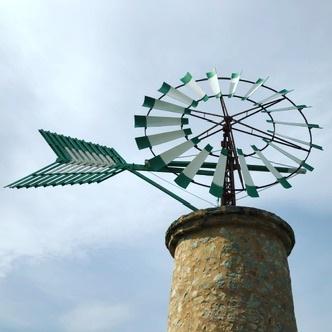How does weather affect your chances of seeing the other Balearic Islands from Mallorca?
Similar Topics
balearic islands visibility
mallorca island views
weather and visibility
serra de tramuntana
best viewing times
atmospheric clarity
seasonal weather effects
island spotting tips
The chances of seeing the other Balearic Islands from Mallorca largely depend on weather conditions, which influence visibility and atmospheric clarity. On clear, sunny days with minimal haze and low humidity, it becomes much easier to catch distant views of neighboring islands such as Menorca, Ibiza, and Formentera from elevated points on Mallorca, such as the Serra de Tramuntana mountain range or coastal cliffs. Bright sunlight enhances contrast, allowing the rugged shapes of the islands to stand out against the blue sea, sometimes even revealing details of the coastline. Conversely, hazy or overcast weather often reduces visibility, blurring the horizon and making distant islands nearly impossible to discern.
Wind and air quality also play significant roles in your chances of spotting other islands. Strong winds can carry dust, salt, and other particles into the atmosphere, creating a haze that diminishes clarity. Calm, still air—especially after a rain shower that has cleared the atmosphere—tends to improve visibility substantially. Early mornings and late afternoons in good weather can be ideal times for island spotting, as the softer light reduces glare on the water and may produce clearer views. On the other hand, mist, fog, or heavy cloud cover can completely obscure the distant landscape regardless of your vantage point.
Seasonal variations influence weather patterns, which in turn affect your viewing possibilities. Summers in Mallorca tend to offer the best conditions for island viewing due to generally stable weather, clear skies, and less atmospheric moisture. In contrast, the cooler months may bring more frequent storms and overcast skies that decrease visibility, although crisp clear days can still occur. Travelers interested in witnessing the other Balearic Islands from Mallorca should consider monitoring local weather forecasts and seek vantage points that offer unobstructed panoramic views for the highest likelihood of a rewarding experience.
Wind and air quality also play significant roles in your chances of spotting other islands. Strong winds can carry dust, salt, and other particles into the atmosphere, creating a haze that diminishes clarity. Calm, still air—especially after a rain shower that has cleared the atmosphere—tends to improve visibility substantially. Early mornings and late afternoons in good weather can be ideal times for island spotting, as the softer light reduces glare on the water and may produce clearer views. On the other hand, mist, fog, or heavy cloud cover can completely obscure the distant landscape regardless of your vantage point.
Seasonal variations influence weather patterns, which in turn affect your viewing possibilities. Summers in Mallorca tend to offer the best conditions for island viewing due to generally stable weather, clear skies, and less atmospheric moisture. In contrast, the cooler months may bring more frequent storms and overcast skies that decrease visibility, although crisp clear days can still occur. Travelers interested in witnessing the other Balearic Islands from Mallorca should consider monitoring local weather forecasts and seek vantage points that offer unobstructed panoramic views for the highest likelihood of a rewarding experience.
🧩 Related Questions
Related Question
What are the key architectural landmarks in Mallorca that showcase its trade-based economy during the Islamic period?
Related Question
How do the qualifications of Mallorca tour guides ensure a high-quality experience for tourists?
Related Question
What role do paintings by artists like Juan Gris play in documenting bullfighting in Mallorca?
